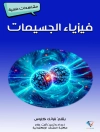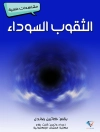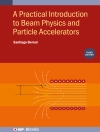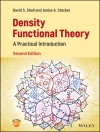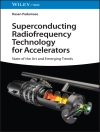The Mössbauer effect was discovered by, and named after, Rudolf Mössbauer at the Technical University of Munich in 1958. At first, this appeared to be a phenomenon related to nuclear energy levels that provided some information about excited state lifetimes and quantum properties. However, it soon became apparent that Mössbauer spectroscopy had applications in a variety of fields, such as general relativity, solid state physics, chemistry, materials science, biology, medical physics, archaeology and art. It is the extreme sensitivity of the effect to the atomic environment around the probe atom, as well as the ability to apply the technique to some interesting and important elements, most notably iron, that is responsible for the Mössbauer effect’s extensive use. This text reviews the historical development of the Mössbauer effect, the experimental details, the basic physics of hyperfine interactions and some of the numerous applications of Mössbauer effect spectroscopy.
Inhaltsverzeichnis
Preface
Acknowledgements
Author Biography
Chapter 1 The history of resonance fluorescence
1.1 Introduction
1.2 Atomic resonance fluorescence
1.3 The Heisenberg linewidth and recoil energy
1.4 The early history of nuclear resonance fluorescence
Problems
References and suggestions for further reading
Chapter 2 The Mössbauer effect
2.1 Introduction
2.2 Discovery of the Mössbauer effect
2.3 More about the Mössbauer effect
2.4 Choice of a Mössbauer transition
2.5 Experimental considerations
Problems
References and suggestions for further reading
Chapter 3 Properties of the nucleus
3.1 Introduction
3.2 Nuclear quantum numbers
3.3 Electromagnetic multipole moments of the nucleus
References and suggestions for further reading
Chapter 4 Hyperfine Interactions – Part I: The electric monopole interaction and the chemical isomer shift
4.1 Introduction
4.2 The electric monopole interaction
4.3 The chemical isomer shift
References and suggestions for further reading
Chapter 5 Hyperfine interactions- Part II: The electric quadrupole interaction
5.1 Introduction
5.2 The electric quadrupole interaction
5.3 Quadrupole splitting of Mössbauer spectra
References and suggestions for further reading
Chapter 6 Magnetic properties of materials
6.1 Paramagnetic materials
6.2 Ferromagnetic materials and mean field theory
6.3 Antiferromagnetic materials
6.4 Ferrimagnetic materials
References and suggestions for further reading
Chapter 7 Hyperfine interactions – Part III: The magnetic dipole interaction and the nuclear Zeeman effect
7.1 Introduction
7.2 The magnetic dipole interaction
7.3 Zeeman splitting of Mössbauer spectra
Problems
References and suggestions for further reading
Chapter 8 Applications of Mössbauer effect spectroscopy
8.1 Introduction
8.2 General relativity
8.3 Magnetic ordering studies
8.4 Crystallographic structure studies
8.5 Mineralogical studies
8.6 Investigations of extraterrestrial materials
8.7 Counterfeit currency detection
References and suggestions for further reading
Über den Autor
Richard A Dunlap received a BS in physics from Worcester Polytechnic Institute, an AM in physics from Dartmouth College and a Ph D in physics from Clark University. Since receiving his Ph D he has been a faculty member of the Department of Physics and Atmospheric Science at Dalhousie University, where he is currently a research professor. In 2005, he was elected a member of the Mössbauer Century Club.


